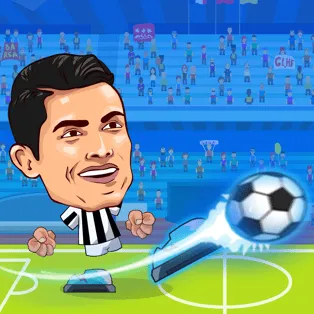The world of Bleach manga characters is vast, complex, and endlessly fascinating. Created by Tite Kubo, this iconic shonen series has captivated readers for decades with its intricate storytelling, stunning artwork, and unforgettable cast. Whether you’re a longtime fan or new to the series, exploring the rich tapestry of Bleach’s characters offers insights into Japanese culture, mythological themes, and the art of manga creation. Let’s dive into this spiritual realm and uncover what makes these characters so compelling.
The Soul Society: A Realm of Powerful Shinigami
At the heart of Bleach’s narrative is the Soul Society, a mystical dimension inhabited by Shinigami (Soul Reapers) who maintain the balance between the living world and the afterlife. This realm is home to some of the most iconic Bleach manga characters, each with their own unique abilities, personalities, and backstories.
The Gotei 13: Guardians of the Afterlife
The Gotei 13, or 13 Court Guard Squads, form the military branch of the Soul Society. Led by the formidable Captain-Commander Genryusai Shigekuni Yamamoto, these squads are composed of some of the most powerful and memorable characters in the series. From the stoic Byakuya Kuchiki to the unpredictable Kenpachi Zaraki, each captain brings a distinct flavor to the story.
One of the most beloved captains is Toshiro Hitsugaya, the young prodigy who leads the 10th Division. His icy demeanor and powerful Bankai, Daiguren Hyorinmaru, have made him a fan favorite. The complexity of his character, struggling with the weight of responsibility at such a young age, resonates with many readers and adds depth to the manga’s exploration of duty and personal growth.
Lieutenants and Seated Officers: Rising Stars
While the captains often steal the spotlight, the lieutenants and seated officers of the Gotei 13 provide much of the series’ heart and humor. Characters like the boisterous Rangiku Matsumoto, the loyal Renji Abarai, and the enigmatic Shuhei Hisagi each have their own compelling arcs that contribute to the rich tapestry of Bleach’s storytelling.
These characters often serve as bridges between the main protagonists and the higher echelons of Soul Society, offering different perspectives on the conflicts that drive the plot. Their personal struggles and growth throughout the series provide relatable touchpoints for readers, making the vast world of Bleach feel more intimate and accessible.
The Human World: Where It All Begins
While much of Bleach’s action takes place in spiritual realms, the series is grounded by its human characters. These individuals, drawn into the world of Shinigami and Hollows, provide a crucial link between the supernatural elements of the story and the everyday world readers inhabit.
Ichigo Kurosaki: The Heart of the Story
At the center of it all is Ichigo Kurosaki, the orange-haired protagonist whose journey from ordinary high school student to powerful Shinigami forms the backbone of the series. Ichigo’s character development is a masterclass in shonen storytelling, blending action, humor, and pathos to create a hero who is both relatable and aspirational.
What sets Ichigo apart from many shonen protagonists is his complexity. He’s not just a powerful warrior, but a young man grappling with the weight of responsibility, the pain of loss, and the challenge of protecting those he cares about. His relationships with his family, friends, and even his enemies drive much of the emotional core of Bleach, making him a character that readers can’t help but root for.
Friends and Allies: The Power of Nakama
Surrounding Ichigo is a cast of human characters who become integral to the story. Orihime Inoue, with her unique healing abilities, Yasutora “Chad” Sado, whose quiet strength belies a fierce loyalty, and Uryu Ishida, the last Quincy, each bring their own strengths and perspectives to the group.
These characters embody the theme of “nakama” (comradeship) that is so central to many shonen manga. Their bonds of friendship, tested and strengthened through countless battles, provide some of the most touching moments in the series. The growth of these characters, from ordinary humans to powerful allies capable of standing alongside Shinigami, is a testament to Kubo’s skill in character development.
Villains and Antagonists: Shades of Gray
No discussion of Bleach manga characters would be complete without examining its villains. Tite Kubo excels at creating antagonists who are more than simple obstacles for the heroes to overcome. Instead, they are complex individuals with their own motivations, beliefs, and tragic backstories.
Sosuke Aizen: The Mastermind
Perhaps the most iconic villain in Bleach is Sosuke Aizen, the former captain of the 5th Division whose betrayal sets much of the series’ plot in motion. Aizen is a masterclass in villain creation, combining intelligence, charisma, and overwhelming power with a philosophy that challenges the very foundations of the Soul Society.
What makes Aizen such a compelling antagonist is not just his strength, but the way he forces both the characters and the readers to question their assumptions about the nature of good and evil. His calm demeanor and seemingly unshakeable confidence make him a formidable presence on the page, and his battles with Ichigo are some of the most memorable in the series.
The Espada: Hollows with Heart
Another group of antagonists that captured fans’ imaginations are the Espada, the ten most powerful Arrancar in Aizen’s army. Each Espada represents an aspect of death, and their designs and abilities are some of the most creative in the series.
Characters like the melancholic Ulquiorra Cifer, the fierce Grimmjow Jaegerjaquez, and the maternal Nel Tu blur the lines between hero and villain, offering complex motivations and loyalties that add depth to the conflict. The battles between the Espada and the Shinigami are not just tests of strength, but clashes of ideology and emotion that drive the story forward in exciting ways.
The Art of Character Design in Bleach
One of the most striking aspects of bleachmanga.net characters is their visual design. Tite Kubo’s distinctive art style, with its emphasis on fashion and unique character silhouettes, has been a major factor in the series’ popularity and influence on manga culture.
Zanpakuto: Swords with Soul
Central to the visual identity of many Bleach characters are their Zanpakuto, the spiritual swords wielded by Shinigami. Each Zanpakuto is unique, reflecting the personality and abilities of its wielder. The concept of Shikai and Bankai, the released forms of these swords, allows for dramatic transformations that are as visually stunning as they are narratively significant.
From Ichigo’s massive cleaver-like blade to Rukia’s elegant white sword, the design of each Zanpakuto adds to the character’s identity and fighting style. The personification of these swords as spirits with their own personalities adds another layer of depth to the characters, exploring themes of self-discovery and inner conflict.
Fashion and Style: More Than Just Looks
Kubo’s attention to fashion is evident in every character design, from the traditional Shinigami robes to the more eclectic styles of characters like Urahara Kisuke or the Arrancar. This focus on style does more than just make the characters look cool; it reflects their personalities and roles within the story.
The contrast between the structured uniforms of the Gotei 13 and the individualistic styles of characters like the Visored or the Espada visually reinforces the themes of order versus chaos, tradition versus innovation that run throughout the series. This attention to detail in character design has made Bleach a favorite among cosplayers and fan artists, further extending its cultural impact.
Legacy and Impact of Bleach Characters
The influence of Bleach manga characters extends far beyond the pages of the manga or frames of the anime. These characters have become cultural icons, inspiring fan art, cosplay, and even academic discussion on themes of spirituality, identity, and power.
The complexity of Bleach’s characters, with their layered motivations and dynamic relationships, has set a high bar for character development in shonen manga. The series’ exploration of themes like sacrifice, loyalty, and the nature of power through its diverse cast has left a lasting impact on the genre.
Moreover, the popularity of characters like Rukia Kuchiki and Yoruichi Shihoin has contributed to discussions about female representation in shonen manga, showcasing strong, complex women who are integral to the story rather than mere sidekicks or love interests.
Conclusion: A World That Continues to Inspire
The world of Bleach manga characters is a testament to the power of creative storytelling and compelling character design. From the streets of Karakura Town to the heights of the Soul Society, these characters have taken readers on an unforgettable journey, blending action, emotion, and philosophy into a uniquely engaging narrative.
As new generations discover the series, and longtime fans revisit their favorite moments, the characters of Bleach continue to resonate, inspire, and entertain. Whether you’re drawn to the noble Shinigami, the complex villains, or the relatable human characters, there’s something in Bleach for every manga fan to appreciate and explore.
We’d love to hear about your experiences with Bleach manga characters. Who are your favorites, and how have they impacted your love for manga? Share your thoughts and join the ongoing conversation about this beloved series!





























